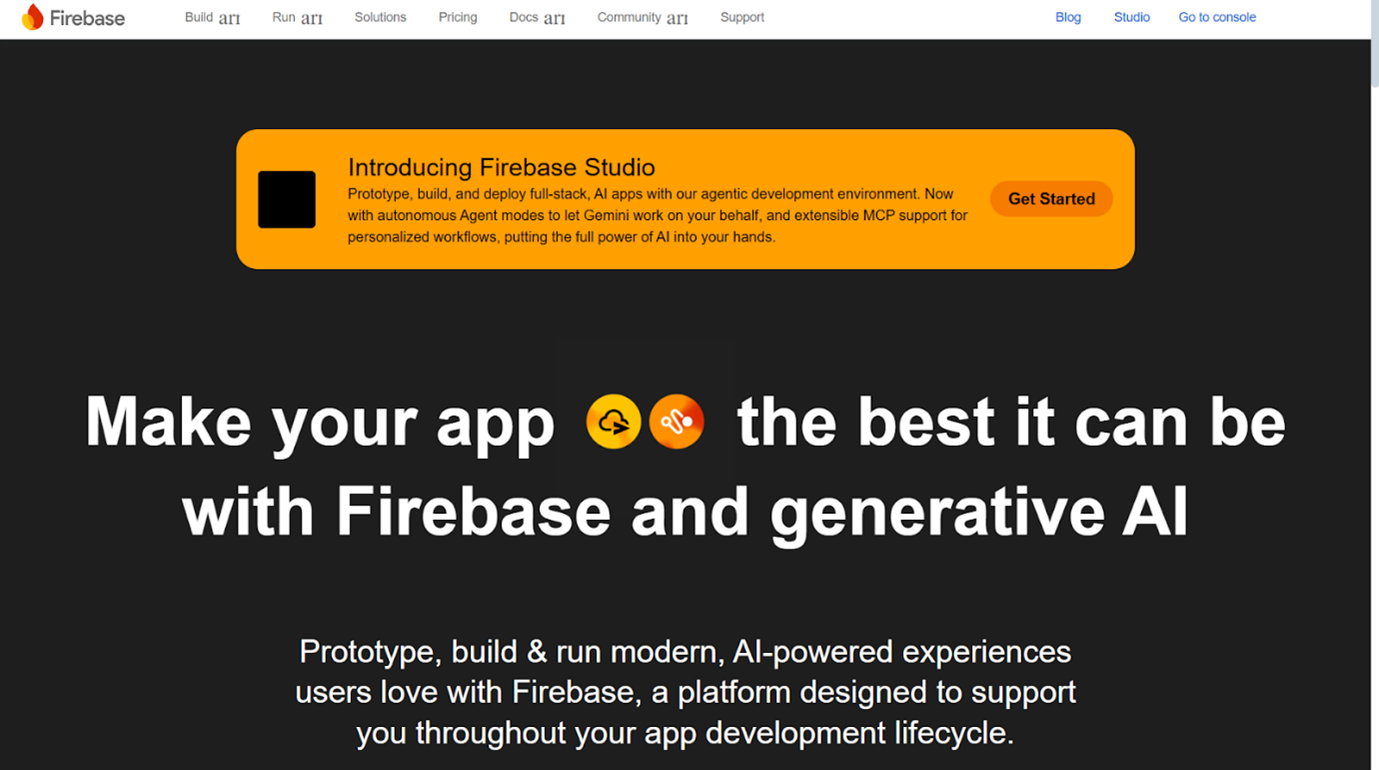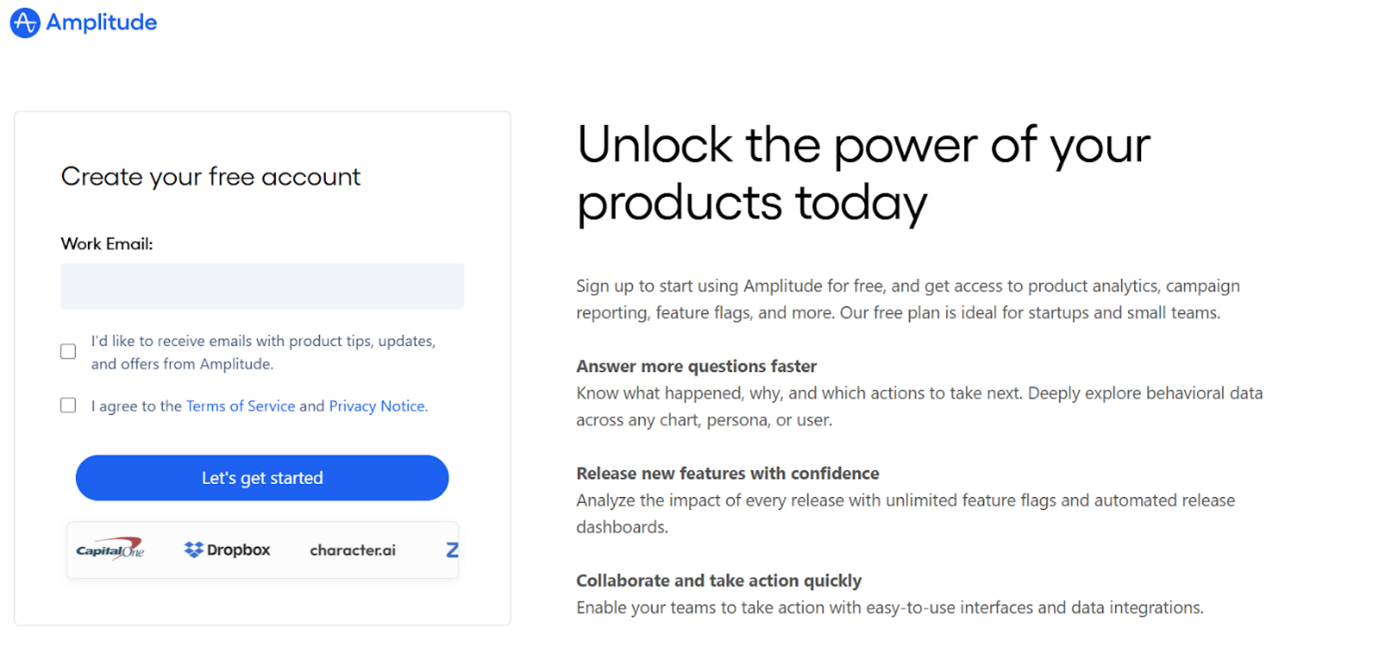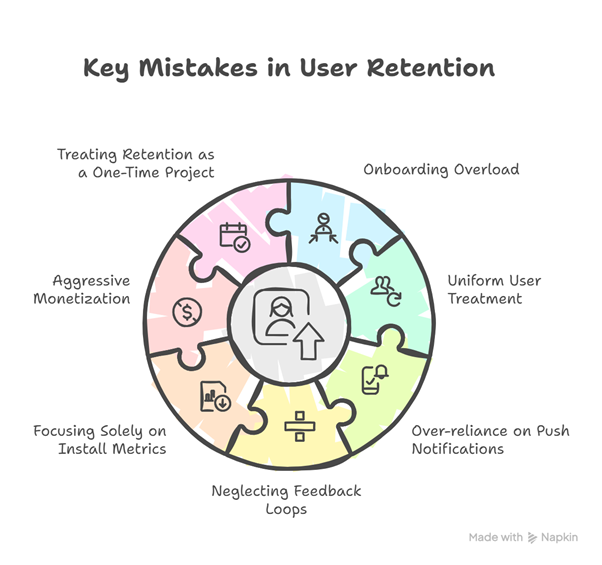Did you know that most mobile apps lose more than 70% of users within the first three days? By Day 30, that figure often falls below 10%. These numbers demonstrate why teams must adopt app retention strategies. This article explains how top product managers approach mobile app retention.
You will find out which strategies keep users hooked, how to boost value over time, and which tools back up these moves. If your aim is to make a product that gets users to return, these mobile app retention plans will aid you in making lasting value.
Why app retention defines product success
App retention basically tells you how many users keep coming back to your app after the first time they install it. It indicates if your app is able to engage customers and provide them with value over a period of time. Many teams usually track retention at major checkpoints, Day 1, Day 7, and Day 30, in order to identify the timing and the reasons for users dropping off. High mobile app retention signifies that users see your product as helpful, fun, or important. A drop in retention usually corresponds with some kind of friction, bad onboarding, or a weak value proposition. In both cases, retention guides the next step in custom software product development.
Here’s why user retention defines success in mobile product development:
- It lowers acquisition costs. Retained users reduce reliance on constant ad spending.
- It increases lifetime value (LTV). The longer users stay, the more they spend or contribute.
- It sharpens product-market fit. High mobile app retention signals that the app meets user needs.
- It drives organic growth: Satisfied users bring others, fueling word-of-mouth adoption.
Mobile app retention strategies shape the entire growth model. Retention can determine how much value your app provides, how sustainable your monetization becomes, and how often users return to solve a problem. Product teams that focus on retention build apps that grow and develop with their users. They measure what matters, resolve the drop-off point, and build systems that keep real users engaged beyond the first week.
7 best proven mobile app retention strategies
Source: napkin.ai
High retention does not happen by chance. It reflects a deliberate effort to guide users, deliver value early, and keep them engaged over time. Many apps lose most of their users in the first few days. This makes keeping users one of the key aims in making a product. The strategies below tell how top apps keep more users by clear start steps, clever fitting to the user, features that make habits, and smart ways to keep users active. Each way hits a different spot in the user’s path and helps keep them using the app for a long time. Here is how to increase app retention:
-
Create an onboarding that delivers value fast
The first few minutes are very key. They have a big impact on how people see your app. An easy, clear, goal-based start helps people get the main parts of your app quicker. For example, Duolingo and Blinkist lead new users step-by-step and bring in features slowly to stop mix-up from the start. If you want to develop similar features, consider consulting custom mobile application development services.
Good onboarding tells users what the app does, why it is needed, and how to start. It makes signing up simple, shows main features, and stresses the good of each step. Apps that keep users coming back pay a lot of attention to making this phase clear, fast, and useful.
-
Personalize the experience based on user behavior
User retention strategies mobile apps use often rely heavily on how well the app adapts to the user., Successful products adjust content, layout, and messaging based on preferences and actions, instead of pushing the same experience to everyone.
Personalization builds relevance. Headspace changes the home screen depending on the time of day or the user’s last session. E-commerce apps like SHEIN recommend products based on past purchases. This type of experience feels more intuitive and gives users a reason to return, as they prefer a personalized experience.
-
Use push notifications
Push notifications can bring users back as easily as push them away. Best user retention strategies in mobile apps rely on timing, context, and value. To work correctly, notifications should reflect user behavior and not interrupt or annoy.
Apps like Agoda send alerts when hotel prices drop for saved destinations. Duolingo uses streak-based reminders that reinforce existing habits. Both examples show how well-timed notifications support the user journey instead of disrupting it.
-
Build habits with streaks and daily goals
Retention grows when users form habits. Apps that encourage consistent behavior through streaks, milestones, and small wins increase daily engagement. These systems reward effort, track progress, and build momentum.
Duolingo celebrates daily language practice with visual progress and rewards. Reddit uses contribution streaks to encourage active participation. These features turn casual users into committed ones by reinforcing daily use.
-
Refresh content to keep users interested
Even the most loyal users get bored when the content seems old. To improve app retention, you can add frequent updates, new features, and make sure the content is dynamic, chosen according to the users’ preferences.
Spotify Wrapped is one of the cases where the hype is built with personalized music recaps. The news applications have a changing nature of headlines depending on real-time events. The application of these strategies, in turn, makes the users find the new value each time they come back to the app.
-
Ask for feedback and act on it
User feedback helps identify what works and what blocks retention. Instead of waiting for app store reviews, leading apps ask for short, in-context responses during the user journey.
Uber Eats prompts customers to rate delivery right after it ends. This feedback loop allows teams to fix issues quickly and improve future experiences. Strong product development depends on this kind of active input from real users.
-
Reward loyalty with tangible incentives
Incentives strengthen retention by giving users something extra to stay engaged. Loyalty rewards, exclusive offers, and in-app credits can tip the scale in favor of your app over competitors.
Web shop apps give cuts in cost to those who come back. Pay-monthly apps give long tests or non-stop deals to those who stay in a lot. These plans make a good loop that keeps users in for long.
Each of these ways to keep users plays a part in long win. When mixed and fit to what users want, they turn new installs into true fans. These fans stay, buy, and boost your app’s worth.
Top tools to improve retention
While strategies define direction, tools enable execution. The platforms below help product teams provide value across every stage of the user journey consistently. From onboarding to long-term engagement. Each tool supports a key layer of your app retention strategy, whether you need to guide users, analyze behavior, or reduce churn.
-
NotifyVisitors
NotifyVisitors is a versatile Push Notifications and automation platform that helps businesses engage customers through personalized, behavior-driven campaigns. It’s especially effective for businesses looking to automate outreach, boost conversions, and track user engagement across multiple touchpoints. With a strong emphasis on personalization and segmentation, NotifyVisitors makes it easy to create targeted campaigns that drive results.
2. Userpilot
Userpilot is a powerful mobile app retention software. It supports onboarding, feature adoption, and engagement for in-app flows with simple drag-and-drop no-code tools. Product managers can use it to set trigger conditions for carousels, checklists, and tooltips based on user actions. Which helps each segment reach value more quickly. You also have the ability to personalize the user’s journey and ease friction in real time with behavior-based targeting. Userpilot thus eliminates guesswork from onboarding and promotes speedy iteration over different user flows.
3. Pushwoosh
Pushwoosh is a tool for sending personalized push notifications, emails, and SMS based on user behavior. It uses event-based triggers and segmentation, as well as A/B testing, so you can send your messages at just the right time for maximum impact. Apps use Pushwoosh to re-engage users just before they churn and automate lifecycle campaigns that assist with retention from Day 1 through Day 30 onward.
4. Firebase
Google’s Firebase provides rich cohort analysis, funnel tracking, and crash reporting. With its help, teams can have a real-time view of user behaviour across sessions and where drop-offs occur. Firebase also integrates with A/B testing, remote config, and cloud messaging to enable dynamic experiences for users. With its insightst, Firebase helps teams develop around retention-based outcomes.
5. Amplitude
Amplitude is a tool that helps teams see how users engage with their app over time. It tracks things like user retention, groups them into cohorts, and shows their navigation paths, allowing us to pinpoint behaviors that encourage ongoing use. For product managers, it highlights where users might get stuck or lose interest during their app experience. By relying on actual data rather than just guesses, Amplitude helps improve retention strategies.
6. CleverTap
CleverTap brings together analytics and user engagement in one platform. It offers tools for predicting user behavior, sending real-time messages, and giving smart recommendations. This makes it easier to reduce churn and keep users active in the app. With CleverTap, teams can spot users who might drop off and automate reminders to keep them engaged. Their lifecycle campaigns help maintain user interest long after the initial setup.
Strong app retention comes from a system, not a single tactic. The tools listed above give you that system, one that supports onboarding, messaging, analytics, and feedback in a way that keeps users active and engaged. Choosing the right platforms helps product managers act on real user behavior, iterate faster, and build experiences that drive retention. With the right foundation in place, you can stop guessing what users need and start delivering it
Common retention mistakes to avoid
Source: napkin.ai
Strong retention starts with the right strategy, but even small missteps can push users away. Many apps have more users leave not because they don’t have features. But due to poorly executed visual design, onboarding, and practices regarding irrelevant engagement. To improve retention, product teams must avoid common practices that interrupt users’ trust or flow, or simply create unnecessary friction. The list below presents key mistakes that product teams may not notice until all of a sudden, users are not coming back.
Source: napkin.ai
- Don’t overwhelm users during onboarding. New users can easily become overwhelmed with too many steps, permissions, or messages. It increases the chance they will leave early. Onboarding should focus on clarity and value, not extensive feature tours.
- Don’t treat all users the same. A single user journey cannot meet everyone’s needs. Ignoring behavior, intent, or past actions leads to irrelevant experiences that drive people away.
- Don’t rely on push notifications alone. Push messages support retention, but they don’t solve core issues. If the product lacks value or usability, no amount of messaging will bring users back.
- Don’t ignore feedback loops. Delayed action to user complaints or low ratings signals neglect. Respond quickly to feedback to strengthen trust and reduce churn.
- Don’t stop at install metrics. It’s good to have high download numbers, however they mean nothing without proper engagement. If you focus only on acquisition, it can hide deeper problems with usability, performance, or relevance.
- Don’t overload the interface with ads or offers. Aggressive monetization breaks the user experience and drive people away. Retention depends on multiple factors, but especially on consistent value, not constant upsells or distractions.
- Don’t treat retention as a one-time project. User retention requires constant and continuous attention. What works in one case, may not work next quarter, especially as your user base grows or shifts.
A noticeable difference can be made through small corrections in flow, messaging, or prioritization. Focus on long-term strategies, not quick fixes, and build an app that users want to return to consistently.
Conclusion
If you assume users will keep coming back without any effort, you could lose both their loyalty and your revenue. Successful apps create loyalty through consistent work, not luck. People want value, quick responses, and a relevant experience every time they use the app. Even the most dedicated users can stop using it if their expectations aren’t met. Retention depends on how well the app helps users along the way, so it’s important to engage them before their interest starts to slip away.
























